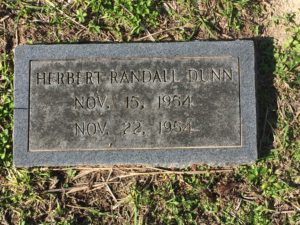As I write this on February 24th, former president Jimmy Carter is at home under hospice care.
The popular story is that Carter had a failed presidency, but post-White House, he was the most successful ex-president ever. Now, 42 years after suffering a landslide defeat to Ronald Reagan, some have changed the first part of that narrative by seeing strength in his single term in office.

Place: Savelugu, Ghana, Date: Feb. 8, 2007, Credit: The Carter Center
In his years after leaving Washington DC, Carter traveled the world serving the poor by bringing healthcare to underserved areas and building houses. His work also included building democracies by helping nations hold free and fair elections. Oh yeah — when he was home in Plains, Georgia, he also taught Sunday school at the Baptist church.
I expected the media to perpetuate a hospice misconception — one of my pet peeves — and they did not disappoint. On ABC World News Tonight this past Monday, David Muir read the teleprompter, “Carter will forgo medical intervention receiving hospice care at home.” I felt like yelling at the TV, “Hospice care IS a medical intervention.” But I didn’t.
Even the announcement of this news from the Carter Center alluded to this mistaken belief. “After a series of short hospital stays, former U.S. President Jimmy Carter today decided to spend his remaining time at home with his family and receive hospice care instead of additional medical intervention.”
Here is what this unfortunate wording insinuates: You seek medical care for a cure. You give up medical care and choose hospice care when you are dying.
Hospice care is one of the best medical interventions you can have. Hospice focuses on the patient, not the disease. The goal is to comfort by any medical means necessary. Hospice care also concentrates on supporting the family as well as the patient.

Place: Austin, Texas, Date: 2014, Credit: LBJ Library
The Carter Center’s announcement also reveals how so many people turn to hospice “After a series of short hospital stays.” I don’t know if these hospital stays were for treatment of the former President’s cancer or if he had another fall. Often when a patient is aging, frail, and seriously ill, patients and their families will eventually conclude, “No more trips to the hospital.”
This is how it should be. There is nothing wrong with seeking medical intervention at the hospital when needed. I also know that some people go to the hospital to die, not wanting to burden the family by dying at home. But most people say they would rather die at home with their family gathered around them if given a choice.
Thank you again, Mr. Carter, for showing us a way to peace.
Cover photo: Place: Nasarawa North, Nigeria; Feb. 15, 2007; Credit: The Carter Center
________________________________________
Chaplain Hank Dunn is the author of Hard Choices for Loving People: CPR, Feeding Tubes, Palliative Care, Comfort Measures and the Patient with a Serious Illness and Light in the Shadows. Together they have sold over 4 million copies. You can purchase his books at hankdunn.com or on Amazon.

 I had a brother who died a week after being born when I was six years old. It wasn’t until I was in my 40s that I asked my mother about Randy’s death. When I did, she burst into tears and said, “My father wouldn’t let me go to his graveside burial service.” I never knew she kept such grief just below the surface. I told this
I had a brother who died a week after being born when I was six years old. It wasn’t until I was in my 40s that I asked my mother about Randy’s death. When I did, she burst into tears and said, “My father wouldn’t let me go to his graveside burial service.” I never knew she kept such grief just below the surface. I told this 
 I’ve witnessed this type of grief firsthand. I was a nursing home chaplain; a co-worker lost a teenage son to a hit-and-run accident. She believed it was murder, but the driver was acquitted at trial. She, understandably, became obsessed with this loss. She even bought a house next to the cemetery so she could always look out on her son’s grave.
I’ve witnessed this type of grief firsthand. I was a nursing home chaplain; a co-worker lost a teenage son to a hit-and-run accident. She believed it was murder, but the driver was acquitted at trial. She, understandably, became obsessed with this loss. She even bought a house next to the cemetery so she could always look out on her son’s grave.